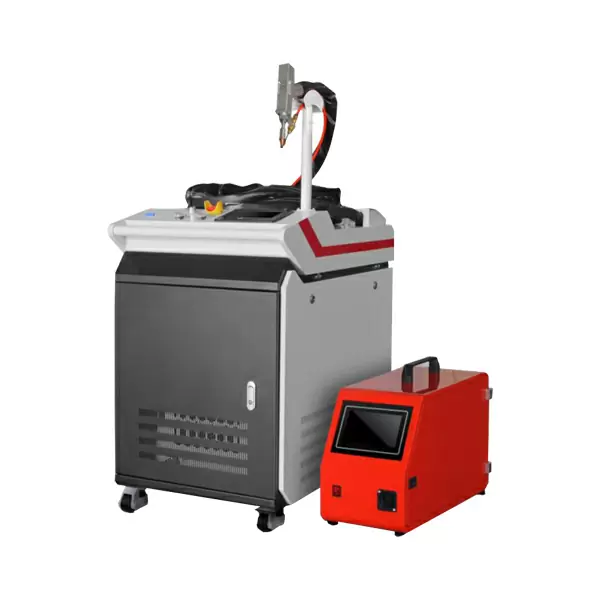The welding process with a laser machine can vary significantly based on the material being worked on.
Here’s how the process differs when welding different materials:
- Metals:
- Similar Metals: When welding similar metals (e.g., steel to steel), the process is relatively straightforward. The laser energy is absorbed by the metal, melting and fusing the parts together.
- Dissimilar Metals: Welding dissimilar metals (e.g., steel to aluminum) requires adjusting parameters due to differing thermal conductivity and melting points. Often, an intermediate layer or special techniques are used to facilitate bonding.
- Plastics:
- Thermoplastics: Laser welding of thermoplastics involves directing the laser beam at the joint between two parts. The heat generated by the laser melts the plastics at the interface, which then fuse together upon cooling.
- Thermosetting Plastics: These materials typically do not melt; instead, the laser beam can activate a chemical reaction or prepare the surface for adhesive bonding.
- Glass:
- Annealing: Laser welding glass involves localized heating to a precise temperature, causing controlled stress to create a weld. Techniques like annealing are often used to avoid cracks or damage.
- Composite Materials:
- Multi-Material Composites: Laser welding of composite materials with different components requires tailored parameters to ensure effective bonding without damaging the materials.
- Ceramics:
- Surface Modification: Laser welding ceramics often involves surface modification techniques or pre-treatment to facilitate bonding due to their high melting points and brittleness.
- Hybrids (Metal-Plastic, Metal-Glass, etc.):
- Complex Welding: Joining materials with significantly different properties requires specialized techniques, possibly involving multiple processes or intermediary layers to achieve a reliable bond.
- Coated Surfaces:
- Surface Preparation: Welding coated surfaces might require the removal of the coating at the welding joint to ensure a proper bond.
In each case, the laser parameters, such as power, speed, focal length, and beam characteristics, need adjustment to suit the material properties. Additionally, specialized techniques or surface treatments might be necessary to optimize the welding process and achieve a strong and reliable bond between the materials.
What distinguishes welding machine from other types of laser engraving technologies?
The primary distinction between welding machines and other laser engraving technologies lies in their intended applications, processes, and the nature of the operations they perform:
- Purpose:
- Welding Machines: Laser welding machines are primarily designed for joining or fusing materials together. They focus on creating strong, durable bonds between materials, such as metals, plastics, ceramics, or glass.
- Engraving Technologies: Laser engraving machines, on the other hand, are designed for etching, welding laser machine cutting, or marking materials. They focus on removing material or altering its surface to create specific designs, patterns, or markings without necessarily joining separate components.
- Process:
- Welding Machines: Laser welding machines use high-intensity laser beams to generate localized heat, melting or bonding materials together at the joint or interface. The goal is to create a solid, unified structure.
- Engraving Technologies: Laser engraving machines utilize laser beams to ablate, vaporize, or modify the surface of materials, creating precise designs, patterns, or text by removing material or changing its appearance without joining separate pieces.
- Application:
- Welding Machines: Common applications include manufacturing, automotive, aerospace, jewelry, and medical industries, where strong and reliable material joining is essential.
- Engraving Technologies: Engraving machines find applications in industries such as signage, awards and trophies, personalization, artistic design, and electronics for creating markings or decorative patterns.
- Parameters and Techniques:
- Welding Machines: Laser welding involves specific parameters and techniques focused on achieving a strong, consistent bond between materials, often requiring precise control of energy, speed, and beam characteristics.
- Engraving Technologies: Laser engraving focuses on controlling parameters to achieve precise cuts, etchings, or markings, requiring attention to detail, resolution, and surface quality without necessarily bonding materials together.
While both technologies utilize laser beams, their core objectives and processes differ significantly, catering to distinct industrial needs and applications related to material joining (welding) and surface modification (engraving).
